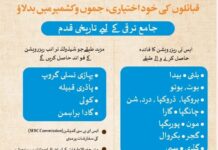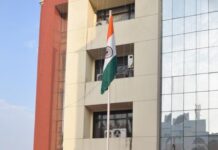30April, New Delhi; Scientists have developed a modern analogue dataset based on biotic and abiotic proxy records from different depositional settings like lakebeds, river beds, forest floors, and croplands across two interfluves of the Central Ganga Plain (CGP) that would be an accurate reference tool for the palaeo-ecological studies in the CGP. The Central Ganga Plain serves as a food basket for thickly populated India and is undergoing significant upheavals in terms of climatic (monsoonal) variability in recent decades. Future scenario assessment requires rigorous climate models which are built utilizing key data inputs (of this eco-system) emerged from well-dated palaeo-reconstructions.A considerable number of records are available from the Central Ganga Plain with restricted information on palaeo-environmental reconstruction. Modern proxies to distinguish different ecology and depositional environment at the appropriate spatial scale are limited, and generation of such proxies is vital for decoding the past environment in the CGP.Furthermore, the Ghaghara-Gandak and Ganga-Ghaghara interfluve regions are areas where several meter-thick sediments have been deposited during the Late Quaternary. The interfluve regions are comprised of different depositional environments, such as fluvial, lacustrine, forest, and croplands, so they are important for past environmental and modern analogue studies. The soil/sediment samples can be complemented with biotic (pollen, diatoms, and phytoliths) and abiotic proxies (sediment texture, stable carbon and nitrogen isotopes, XRD/ XRF elements, and magnetic susceptibility parameters).The BSIP, an autonomous institute of DST, evaluated the strength and weaknesses of biotic and abiotic proxy records of the Ghaghara-Gandak and Ganga-Ghaghara interfluves of CGP.For the first time, they adopted a holistic approach towards developing multiproxy modern analogues from the two interfluves, which would be an accurate reference tool for the palaeo-ecological studies in the Central Ganga Plain and surrounding areas. The study published in the journal Catena, evaluated both the strength and weaknesses of these proxies and assessed how reliably multiproxy modern analogues can identify different ecological and depositional environments and could be used as a baseline in interpreting Late Quaternary palaeo-environmental and ecological changes more accurately in this region.The study of biotic and abiotic interactions is important as they aid in building the forest community, food crops, agro-pastoral and human settlements in this region. Consequently, the palaeo-ecological data would assist in better understanding the past and also the sustainable future projections in the Central Ganga Plain.
Home Jammu Kashmir Newly developed modern analogue dataset based on biotic and abiotic proxy records...





